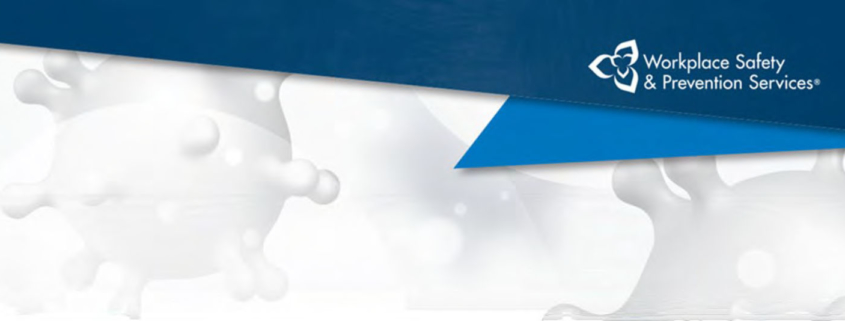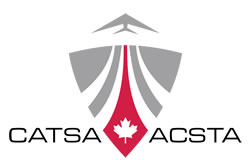Workplace Safety & Prevention
Guidance on Health and Safety for Television, Film and Live Performance Sector during COVID-19
OVERVIEW
This is not a legal document and employers are advised to seek legal advice.
Employers and constructors have obligations to protect workers from hazards in the workplace as set out in the Occupational Health and Safety Act (OHSA) and its regulations and the directives coming from the Chief Medical Officer of Health.
Workers should raise any concerns to their:
- supervisor
- joint health and safety committee
- health and safety representative
This will help ensure the employer has taken all reasonable precautions.
Ontario is currently in the midst of a global pandemic. While the COVID-19 situation is changing rapidly, the legislation and regulations used to govern Ontario’s workplaces are not.
Under Ontario law, employers have the duty to keep workers and work sites safe and free of hazards. Workers have the right to refuse unsafe work. If health and safety concerns are not resolved internally, a worker can seek enforcement by filing a complaint with the ministry’s Health and Safety Contact Centre at 1-877-202-0008. Failure of the employer or constructor to comply with the OHSA and its regulations could result in a stop-work order upon inspection by the Ministry of Labour, Training and Skills Development.
BEST PRACTICES
A new type of virus, known as COVID-19, is causing an outbreak of respiratory (lung) disease. The severity of this illness can vary from person to person. There are steps you can take to prevent the spread of infection. This document provides information to help you while working during the COVID-19 pandemic.
RECOGNIZE AND ASSESS
COVID-19 can cause a range of symptoms, including fever, cough, sore throat and shortness of breath. These symptoms can appear in a few days or up to 14 days after being exposed to the virus. For some people, the symptoms are like having a cold; for others they may be severe or life-threatening.
The virus is transmitted via droplets during close, unprotected contact with an infected person, or by touching an infected surface and then the mouth, nose, or eyes.
Keeping safe at work involves understanding how employees could come into contact with COVID-19 as they perform their jobs, and then taking steps to minimize contact.
People working as program hosts, reporters, performers, writers, technical crew, wardrobe and make-up stylists, admin staff, sales and marketing staff are just some of those in the TV, Film, Live Performance Sector who need to consider how they can work safely and prevent COVID-19 from spreading.
In addition, employers should advise these workers to complete the online self-assessment or call either:
- Telehealth: 1-866-797-0000
- their primary care provider (for example, family physician)
CONTROLS
Here are a number of options for protecting Television, Film and Live Performance workers from exposure to COVID-19:
- Postpone non-essential projects and tasks.
- Limit entry points and control how many people enter the site at one time, who they speak to, and what they handle.
- Have all employees and visitors wash their hands thoroughly with soap and water, or an alcohol-based hand sanitizer if soap and water are not available, before entering the workplace, after contact with others, or with surfaces others have touched. Be sure to include handwashing before breaks and at shift changes, etc. Be sure to keep an adequate supply of soap, paper towels, etc.
- Control who comes into your facility, who they speak to, and what they handle. Control activities may include informing, screening, and hand washing or sanitizing before coming on site. Check the Ministry of Health and Long-Term Care website for screening guidelines.
- Screen workers regularly for health issues. If anyone develop symptoms of COVID-19, implement procedures for reporting the illness and keeping the worker away from others.
- Limit the number of people working in one space. This also applies when travelling to different locations. Stagger shifts and break times. Encourage social distancing during lunch breaks.
- Keep people a safe distance apart by using floor markings, installing barriers and partitions, and changing the work layout where possible.
- Replace buffets with wrapped food items.
- Train employees on possible COVID-19 transmission points, steps being taken to protect them, and how to protect themselves, including frequent hand washing or sanitizing, and not touching their face.
- Clean the workplace thoroughly and often, especially frequently touched surfaces. Pay particular attention to props, equipment, sets, and common areas (entryways, washrooms, kitchen, etc.).
- Avoid face to face meetings and consultations. If you must meet, maintain a physical distance.
As a last resort, consider personal protective equipment (PPE). PPE is effective only if appropriate to the situation and people wear it correctly. Ensure PPE training includes the fit, use, care, putting on and taking off, maintenance, cleaning and limitations of the PPE.
Disposable gloves are one example of PPE that can help limit contact with surfaces that may be infected. Implement safe practices for changing gloves, such as if they are torn or dirty and disposing of them.
Respiratory protection is not the first line of defence against COVID-19. Please continue to monitor Public Health Ontario for respiratory protection advice.
EVALUATE
COVID-19 has presented challenges workplaces have never encountered before. Keep in mind that any adjustments made today may need readjusting tomorrow. Look at preventative measures on an ongoing basis, and adjust them if they are not working well enough or causing other issues. For example, are people doing what they’ve been asked to do? If not, what is preventing them from doing so? Can you make adjustments and improve?
For anyone who thinks they may have been exposed to or are experiencing symptoms of COVID-19, please start by visiting the Ministry of Health and Long-Term Care website and taking a self-assessment: https://covid-19.ontario.ca/self-assessment/#q0. Please do not visit an assessment centre unless you have been referred by a health care professional. Do not call 911 unless it is an emergency.
For additional information, refer to Health Canada’s website on COVID-19: https://www.canada.ca/en/public-health/services/diseases/2019-novel-coronavirus-infection/being-prepared.html?topic=tilelink
RESOURCES
Stay updated with daily government updates on COVID-19:
Government of Ontario
Government of Canada
Public Health Ontario
NOTE: This document is intended for informational purposes only to provide an overview of the potential hazards posed in the workplace due to COVID-19. It is not intended as medical advice, to provide a comprehensive risk assessment for all workplaces, or to replace any legislated workplace safety obligations. Due to the ongoing evolution of the situation in Ontario and around the world, this document may be used as a guide for Employers in addition to guidance delivered by public health authorities such as the World Health Organization (WHO), Ontario Ministry of Health, Public Health Ontario and the Centers for Disease Control and Prevention (CDC).” Any use which is made of this document by any Employer, or any reliance on or decisions to be made based on it, are the responsibility of the Employer. WSPS and its partners, officers, directors, employees, agents, representatives, suppliers and service providers accept no responsibility for any errors or omissions in content or for damages of any kind or nature suffered by any Employer or any third party as a result of use of or reliance on this communication.






